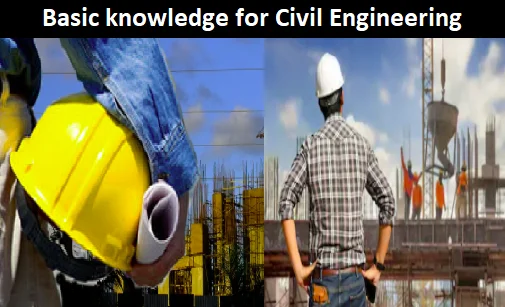Introduction to Civil Engineering
- Civil engineering is a large area of engineering that includes designing, building, and maintaining infrastructure.
- Civil engineers work on projects like roads, bridges, buildings, dams, airports, and water systems.
- Civil engineering is a tough but rewarding job that allows you to make a big change in the world.
What is civil engineering?
Civil engineering uses science and engineering to design, build, and keep up public works like roads, bridges, canals, dams, airports, sewage systems, pipelines, building structures, and railways. Civil engineers plan, create, manage, build, and run these projects. They have to consider how their designs affect the world and ensure they are safe and effective.
History of civil engineering
- Civil engineering has existed since people built simple things like roads and bridges in the old world.
- The Egyptians, who built the temples, and the Romans, who made the aqueducts, were two of the first people known to have been civil engineers.
- Civil engineering in Europe worsened during the Middle Ages but improved again during the Renaissance.
- Civil engineering made a lot of progress in the 19th century. It is because new tools like steel and concrete were made.
- Civil engineers were important in building roads, bridges, and airports during the 20th century.
Branches of civil engineering
Civil engineering is a big field with a lot of different subfields. These are some of the most popular types of civil engineering:
Structural engineering
Structural engineering is a type of civil engineering that deals with how buildings are designed, analyzed, and built. Structural engineers build buildings that resist natural forces like wind, earthquakes, and heavy traffic loads. They must also make sure the building is safe and works well.
What do structural engineers do?
There are many things that structural engineers do, such as:
- Doing a structural analysis to find out what forces will be acting on a building
- Creating buildings that can stand up to these forces
- Choosing the materials for the building
- Making plans and specs for building
- watching over the building of the house
- Keeping an eye on how well the building works after it is built
What are the different types of structures that structural engineers design?
Structural engineers create many different kinds of buildings, such as:
- Buildings
- Bridges
- Dams
- Tunnels
- Power plants
- Airports
- Ships
- Aircraft
- Spacecraft
What are the different forces that structural engineers need to consider?
Some of the things structural engineers have to think about are:
- Gravity
- Wind
- Earthquakes
- Traffic loads
- Wave loads
- Blast loads
- Thermal loads
- Impact loads
What are the different materials that structural engineers use?
- Concrete
- Steel
- Wood
- Aluminum
- Glass
- Composite materials
Transportation engineering
Transportation engineering is a type of civil engineering that deals with how transportation systems are planned, designed, built, run, and kept up. Transportation engineers are in charge of coming up with and putting into action answers to problems with transportation, such as traffic jams, air pollution, and safety.
What do transportation engineers do?
Transportation experts do many different things, such as:
- Doing traffic research to find out how much transportation is needed
- Making plans for roads, bridges, tunnels, and other parts of the transportation system
- Creating methods to control traffic
- Taking a look at how transportation projects affect the world
- Taking care of transport projects
- doing a study on new forms of transportation
What are the different types of transportation systems that transportation engineers design?
Transportation experts plan many different kinds of transportation systems, such as:
- Roads
- Bridges
- Tunnels
- Airports
- Railways
- Mass transit systems
- Bicycle paths
- Pedestrian walkways
Water resources engineering
Water resources engineering is a part of civil engineering that is concerned with how water resources are managed. Engineers who work with water resources come up with and put into action answers to water problems like lack of water, water pollution, and flooding.
What do water resources engineers do?
Water resources experts do many different things, such as:
- Studying water resources to find out how much water is available and how much is needed
- Making plans for dams, levees, and other buildings that control water
- Creating methods for getting water to people
- Getting rid of and treating pollution
- Keeping water clean
- Getting information about new water tools
What are the different types of water resources projects that water resources engineers work on?
Water resources engineers work on a wide variety of projects, including:
- Dams
- Levees
- Canals
- Water treatment plants
- Wastewater treatment plants
- Stormwater management systems
- Irrigation systems
- Hydroelectric power plants
- Water conservation projects
Environmental engineering
Environmental engineering is a type of civil engineering that focuses on protecting the environment. Environmental engineers devise and put into action answers to problems like air pollution, water pollution, and managing solid waste.
What do environmental engineers do?
Environmental engineers do many different things, such as:
- Environmental effects studies are done to determine how people’s actions affect the environment.
- Making and running devices to stop pollution
- Creating and implementing plans to deal with waste
- Cleaning up polluted sites
- Getting people to understand environmental problems
What are the different types of environmental problems that environmental engineers work on?
Environmental engineers work on a wide variety of ecological problems, including:
- Air pollution
- Water pollution
- Solid waste management
- Hazardous waste management
- Noise pollution
- Landfills
- Climate change
- Environmental Remediation
Geotechnical engineering
Geotechnical engineering is a type of civil engineering that looks at how things from the earth behave from an engineering point of view. Geotechnical engineers study the properties of earth and rock and how they behave in different situations, like when they are loaded, under stress, or have different amounts of water.
What do geotechnical engineers do?
Geotechnical engineers do many different things, such as:
- Taking dirt and rock samples and testing them.
- Making plans for building foundations.
- Take a look at how stable hills and banks are.
- Problems with old buildings, like landslides and sinkholes, are looked into.
- Designing and keeping an eye on buildings that hold back the earth, like dams and levees.
- Creating and putting in place plans to clean up contaminated areas.
What are the different types of geotechnical problems that geotechnical engineers work on?
Geotechnical engineers work on a wide variety of geotechnical problems, including:
- Foundation design
- Slope stability analysis
- Groundwater control
- Soil improvement
- Soil remediation
- Landfill design
- Tunnel design
- Dam design
- Levee design
Construction engineering
Construction engineering is a part of civil engineering that deals with planning, designing, building, and managing construction projects. Construction engineers work with architects and engineers to ensure that building projects are finished on time and within budget.
What do construction engineers do?
Construction engineers do many different things, such as:
- Putting together plans and specs for building
- figuring out how much building jobs will cost
- Setting up a schedule for building projects
- Taking care of building jobs
- checking on building jobs
- Keeping an eye on quality
- Keeping an eye on the building crew
What are the different types of construction projects that construction engineers work on?
Construction engineers work on a wide variety of construction projects, including:
- Buildings
- Bridges
- Roads
- Tunnels
- Dams
- Power plants
- Airports
- Ships
- Aircraft
- Spacecraft
Building Materials used in Construction
All of the building parts are made of different kinds of materials. These things are either called building materials or construction materials.
A builder, who could be an architect, engineer, or contractor, should know everything there is to know about these building elements. Knowing about different types of materials, their properties, and how they can be used for different purposes is a very important tool for builders to save money on materials.
The cost of materials in a building is between 30% and 50% of the total cost of making it. In addition to saving money on materials, the right use of materials leads to a stronger structure, works better, and looks better.
Construction materials are the parts of buildings, structures, and other things that are used to build them. Concrete, steel, wood, plaster, glass, and many others fall into this category. Each of these building materials has unique qualities that make it good for certain kinds of building projects. In this blog post, we’ll talk about some of the most popular types of building materials and how they are used.
Stone
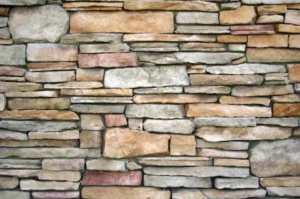
Stones are popular building resources because they are easy to find in nature. The most important things for building stones to have are strength and longevity.
Other important things to look for in good building stones are their Crushing strength, Appearance, Durability, Fracture, Hardness, Percentage Wear, Resistance to Fire, Specific Gravity, Texture, Water Absorption, and Toughness index.
Stones are mostly used for building, flooring, and other things like ballast for trains and flux in a blast furnace, among other things.
Bricks
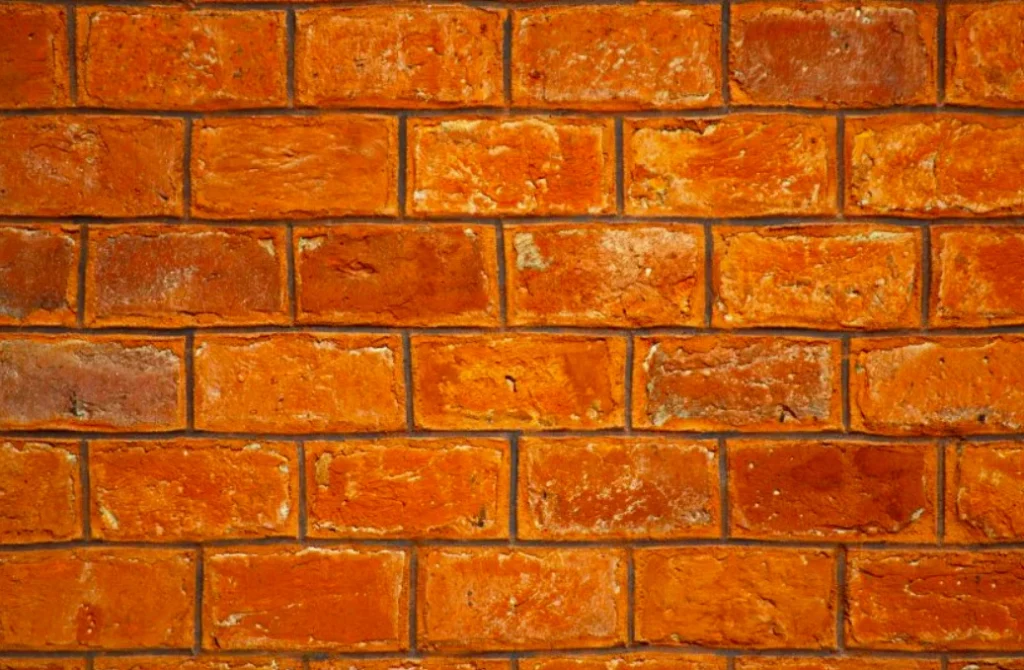
Bricks are a building material used to make a wall, a path, and many other construction elements. It has been used to build things for thousands of years, making it one of the oldest building products.
In the past, bricks were made of mud and dried in the sun to make them hard. In 3500 BC, when fired bricks were made, this was the biggest step forward. From then on, people in colder places also started to like brick. To make a brick, you must get the clay ready, shape it, dry it, and then burn it.
A good brick shouldn’t have cracks and should have sharp and square sides. When hit together, they should make a clear ringing sound.
Cement
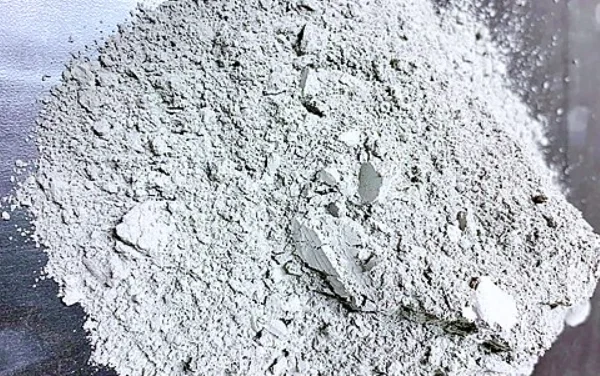
Cement is a “binder,” a building material that sets, hardens, and sticks to other materials to hold them together. Geopolymer cement and Portland cement are the two main types of cement.
Cement is rarely used on its own. Instead, it is used to hold sand and rocks together. When sand is mixed with fine material, it makes mortar for building; when sand and gravel are mixed, they make concrete.
Cement is used more than any other material and is only second to water as the most-used resource in the world.
Sand
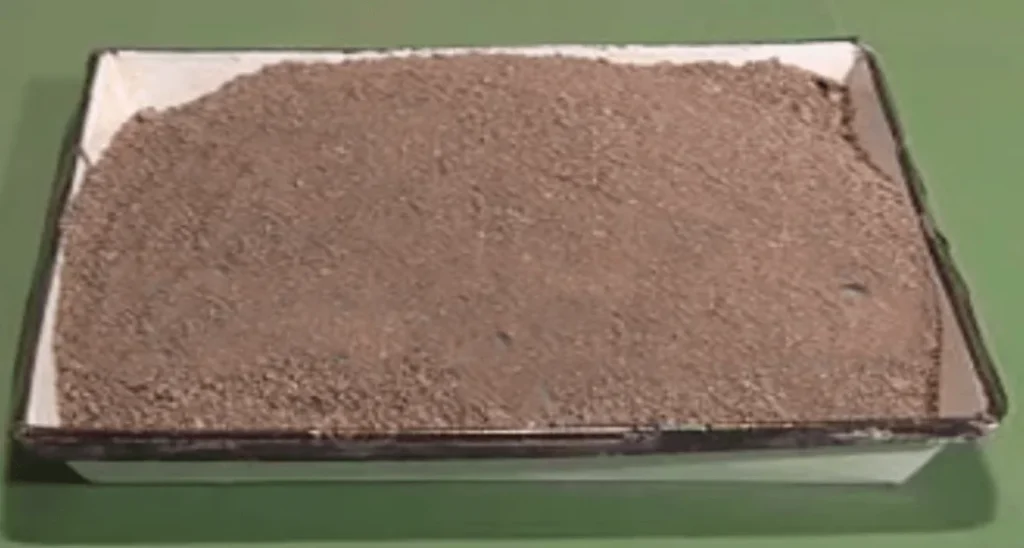
Sand is an important building material. It comprises small pieces of rock and minerals that have broken apart. It is smaller than gravel and not as small as sand.
Sand comprises Silica (silicon dioxide, or SiO2), usually as quartz. Sand is the main thing that goes into building products like concrete and mortar.
Mortar
Sand, glue, and water are mixed to make mortar. When cement is used as the binding material, it is called cement mortar. When lime is used as the critical material, it is called lime mortar. If gypsum is used as the binding material, it is called gypsum mortar. In masonry, mortar keeps things like bricks and stones together. It is also used to put up plaster.
Concrete
Concrete is a mixture of Portland cement, water, coarse and fine aggregates, and admixtures in the right amounts to make a pliable mass that can be poured, put, or shaped into forms that will harden into a solid mass. Plastic concrete is good because it is easy to work with, doesn’t break apart, and sets up when you want it to.
The hardened concrete should have the service qualities that were wanted, such as strength (compressive and flexural), durability (no cracks, resistance to thawing and freezing, resistance to chemical attacks, and abrasion resistance), and strength (compressive and flexural).
Because of the following qualities, cement concrete is an important building material:
- You can make concrete into any size or shape you want.
- Cement concrete can be controlled and changed in how it works.
- Preparing and putting it down can be done by machine.
- Concrete is flexible enough to be used for industrial work.
Steel
Steel is a strong, long-lasting metal often used to build bridges, houses, and other structures. It is often used with other things, like concrete, to make harder and more stable structures. Steel is also resistant to fire, rust, and different types of damage, which makes it a long-lasting and reliable building material.
Wood
Wood is a natural building material for framing, floors, and other structural parts. It is a resource that can be used over and over again. It is cheap and easy to work with. Wood is also very flexible and can make many different styles and patterns.
Plaster
Plaster is a mixture of water, sand, and either lime or gypsum used in building projects to make smooth, flat surfaces. It is often used to finish the walls inside a building. It is also used to create artistic things like mouldings and cornices. Plaster is a strong, long-lasting material that can’t be burned or damaged in other ways.
Glass
Glass is made from silica, soda ash, and limestone. It is clear and breakable. It is often used to make windows, doors, and other parts of buildings that let natural light into a room. Glass is also used to make things like windows and skylights for decoration.
Civil Engineering Interview Questions for Freshers
Some of the most common civil engineering interview questions for freshers include:
- Tell me about yourself.
- Why are you interested in civil engineering?
- What are your strengths and weaknesses?
- What is your experience with AutoCAD or other CAD software?
- What is your experience with structural analysis software?
- What is your experience with construction materials?
- What is your experience with construction methods?
- What is your experience with construction safety?
- What is your experience with quality control?
- What are your salary expectations?
Civil Engineering Projects for Students
Here are some tips for choosing a job in civil engineering:
- Choose a project that is related to what you like and what you want to do with your job.
- Choose a job that will be difficult but doable.
- Choose a job whose goal and scope are clear.
- Choose a job that has all the things you need to do it.
- Pick a job that you can finish in a reasonable amount of time.
FAQ’s
How can I prepare for a civil engineering interview?
Learn as much as possible about the company and the job you’re looking for.
Get used to answering typical interview questions.
Be ready to talk about your skills and work history.
Dress in a businesslike way.
Have faith and a good attitude.
What are some things to avoid in a civil engineering interview?
Be on time for the interview.
Don’t be unprepared.
Don’t be negative or critical.
Don’t lie or brag about your experience.
Wait to talk about how much money you want too soon in the conversation.
What are some things to do after a civil engineering interview?
Send a note of thanks to the person who interviewed you.
Contact them again if you have not heard back from the reporter after a few days.
Keep your skills and knowledge current.
Keep building relationships with people in the civil engineering field.
Which Specialty materials used in civil engineering?
Geotechnical materials (soil, rock)
Hydraulic materials (water, concrete)
Environmental materials (recyclable materials)
Smart materials (self-healing materials)
Which Materials used in specific civil engineering applications?
Structural materials (buildings, bridges)
Transportation materials (roads, railways, airports)
Water resources materials (dams, levees, canals)
Environmental materials (wastewater treatment plants, landfills)
Geotechnical materials (foundations, retaining walls)
